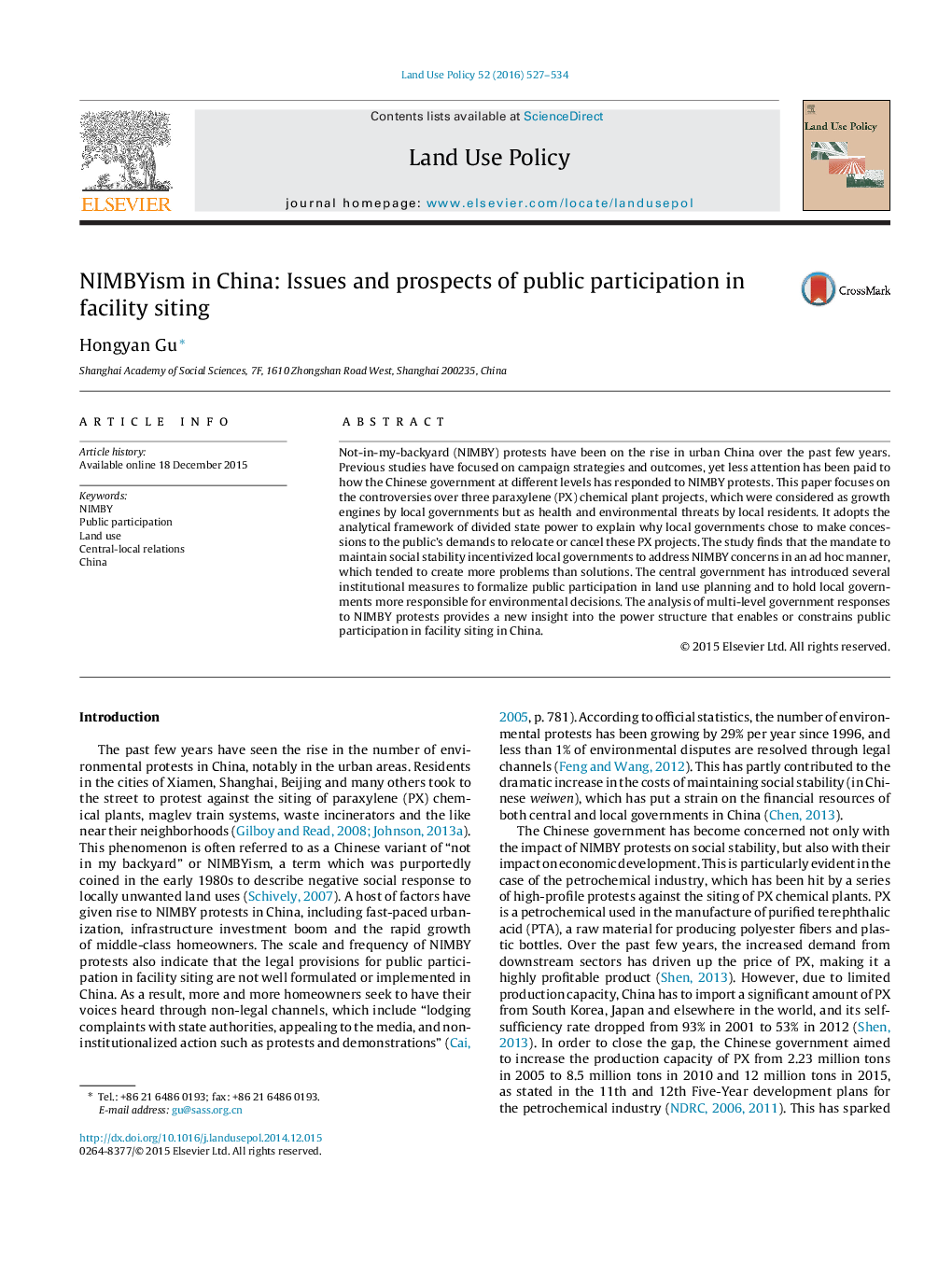| Article ID | Journal | Published Year | Pages | File Type |
|---|---|---|---|---|
| 6547533 | Land Use Policy | 2016 | 8 Pages |
Abstract
Not-in-my-backyard (NIMBY) protests have been on the rise in urban China over the past few years. Previous studies have focused on campaign strategies and outcomes, yet less attention has been paid to how the Chinese government at different levels has responded to NIMBY protests. This paper focuses on the controversies over three paraxylene (PX) chemical plant projects, which were considered as growth engines by local governments but as health and environmental threats by local residents. It adopts the analytical framework of divided state power to explain why local governments chose to make concessions to the public's demands to relocate or cancel these PX projects. The study finds that the mandate to maintain social stability incentivized local governments to address NIMBY concerns in an ad hoc manner, which tended to create more problems than solutions. The central government has introduced several institutional measures to formalize public participation in land use planning and to hold local governments more responsible for environmental decisions. The analysis of multi-level government responses to NIMBY protests provides a new insight into the power structure that enables or constrains public participation in facility siting in China.
Related Topics
Life Sciences
Agricultural and Biological Sciences
Forestry
Authors
Hongyan Gu,
